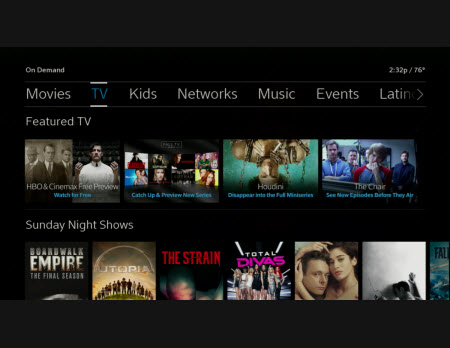Set-Top VOD Ads Must Evolve to Survive

NEW YORK — Though there’s some frustration about set-top box video-on-demand advertising being undervalued, the category must continue to evolve, or risk getting overrun by other, more agile platforms.
Cable VOD advertising needs to get better and faster, “or it will fall out of the mix,” Scott Rosenberg, senior vice president and general manager of advertising at Roku, warned at VideoNuze’s 2017 Online Video Advertising Summit here.
Related: Set-Top VOD Ad Views Surging
Set-top VOD can suffer from delays in reporting and from other shortcomings that aren’t present in the OTT advertising realm, he said.
Set-top-box VOD tends to focus on C3 and C7 ratings, but from days eight and beyond, “it’s feeling fragmented,” Maureen Bosetti, chief partnerships officer at media planning and buying company Initiative, said. “There’s an opportunity to get the measurement right.”
It’s also important to get the right creative for dynamically inserted ads, Pooja Midha, senior vice president of digital ad sales and operations at Disney/ABC Television Group, added. “It’s a different pitch process,” she said, noting that such inventory tends to get lumped in with traditional TV.
Although set-top VOD faces challenges ahead, it’s still a significant growth business. Canoe, the MSO-backed advanced ad joint venture, reported in April that VOD ad impressions reached 5 billion in the first quarter, a 21% jump. Canoe, now on track for more than 20 billion ad impressions for 2017, delivered a record 17.9 billion impressions in all of 2016.
However, in the digital advertising realm, there is an increasing pivot toward TV-connected devices. Last week, FreeWheel, the online ad-tech firm owned by Comcast, said Roku players and other TV-connected OTT devices toppled PCs/desktops to jump into the lead with respect to online ad view share in the first quarter of 2017.
Related: OTT Devices Gobbling Up Ad View Share: FreeWheel
“There’s incredible growth to be had there” when set-top VOD and OTT are combined, James Rooke, general manager, publisher platform at FreeWheel, said here as he presented those results.
“We’re very bullish on OTT,” Bosetti said. “The growth there is tremendous … but we need to plan for it appropriately.”
MOBILE MUST BE ‘AGNOSTIC’
A separate panel here focused on the evolution of advertising in another big growth area — mobile.
Mobile video advertising faces a significant challenge because it’s supporting a wide variety of short-form as well as premium, long-form TV content.
Mobile video must be approached as “agnostically as possible,” but the way the market is evolving also means one can’t put a 30- or 60-second spot in front of every piece of content heading to a smartphone, Mike Law, executive vice president and managing director of video investment at Dentsu Aegis Network U.S., pointed out. “I don’t know if we’ve completely solved for that.”
But what type of content is being viewed also matters. Shorter ads and smaller ad loads should be tied to shorter videos viewed on mobile devices, but not so with a show such as ABC’s Scandal, if it’s being viewed on a smartphone.
“That shouldn’t limit the [ad] supply,” Law said. “They’re still a viewer.”
For something like Scandal, those core metrics will be the same across multiple platforms, agreed Justin Fadgen, vice president of business development at Beachfront Media.
Spotify, the music streaming service that has expanded into video, is experimenting with ad models that use smaller loads in order to provide a better overall experience, Brian Danzis, head of global video monetization at Spotify, said.
Using TV-like ad loads on a mobile device can be “kind of annoying” to the viewer, he added.
Spotify has also created an ad matrix that delivers a certain ad format, depending on the device the consumer is using. “Fragmentation is a result of convergence,” Danzis said.
Multichannel Newsletter
The smarter way to stay on top of the multichannel video marketplace. Sign up below.
